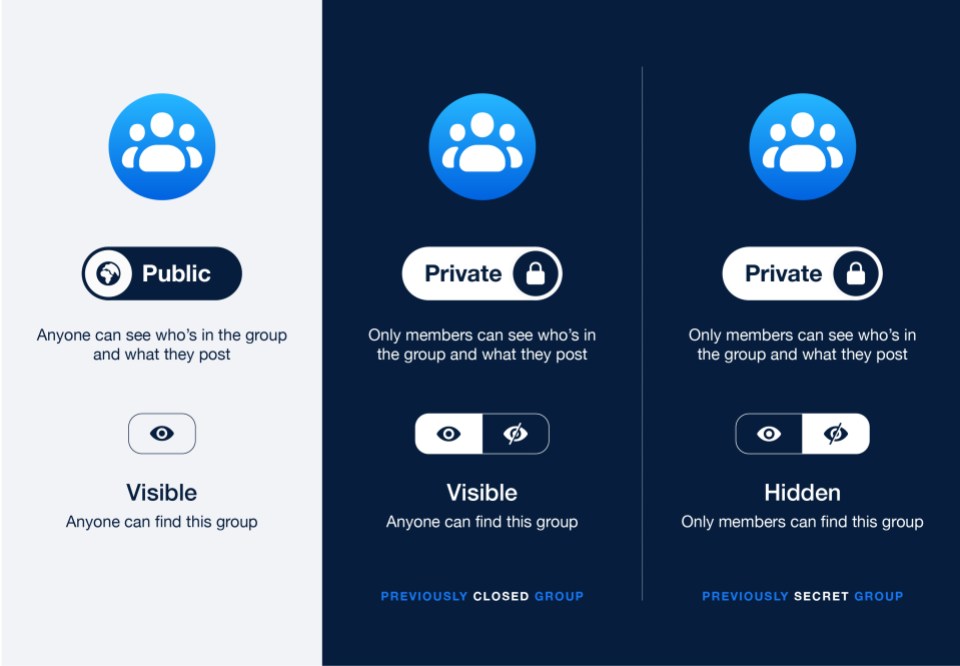By Jordan Davis, Product Manager for Facebook Groups
As Mark Zuckerberg laid out earlier this year, social networks can serve as the digital equivalent of a town square or a living room. We know people have needs for both public spaces where you can share with a wide audience and private ones where you can share more intimately. For Facebook Groups, people have historically been able to choose between being public, closed or secret settings for their group. To better match people’s expectations and help provide more clarity, we’re rolling out a new simplified privacy model for Groups — public and private.
We’re making this change because we’ve heard from people that they want more clarity about the privacy settings for their groups. Having two privacy settings — public and private — will help make it clearer about who can find the group and see the members and posts that are part of it. We’ve also heard that most people prefer to use the terms “public” and “private” to describe the privacy settings of groups they belong to.
Over the last year, we worked closely with global privacy experts and advocates who are working to raise awareness of how to better manage your information online. These experts provided us with key insights to help ensure that these new privacy settings are clearer and simpler to use.
Our Community Standards and proactive detection technology will continue to apply across private and public groups, just as they did for the previous privacy settings of public, closed and secret groups. This allows us to find and remove bad actors and bad content, helping keep Facebook safe for everyone.
New Groups Privacy Settings
With two clear options, this new privacy model is much more intuitive. Public groups allow anyone to see who’s in the group and everything that’s shared there. With private groups, only members can see who else is in the group and what they’ve posted.
We also heard that people wanted more control over how their groups can be discovered. So now admins will be able to clearly choose whether or not the group can be found in search and other places. By separating the privacy settings for posts and group membership from the overall discoverability of the group, it is easier for admins to understand and manage their group privacy settings, and also easier for members to know important information like who can find the group.
By default, a group that was formerly “secret” will now be “private” and “hidden.” A group that was formerly “closed” will now be “private” and “visible.” Groups that are “public” will remain “public” and “visible.” Admins can find the new controls in their Group Settings. Just as it is today, there are restrictions to if and when an admin can change the privacy setting of a group. Group members are always notified when an admin updates the group’s privacy setting.
Safety
We’re committed to ensuring that people have a safe experience on Facebook. Over the last few years, we’ve invested heavily in people and technology, hiring more than 30,000 people across our safety and security teams. Within this, a specialized team has been working on the Safe Communities Initiative, with the goal of protecting people using Facebook Groups from harm. Much of the work they do is around proactively identifying and removing posts and groups that break our rules, across both private and public groups.
Increasingly, we can use AI and machine learning to proactively detect bad content before anyone reports it, and sometimes before people even see it. As content is flagged by our systems or reported by people, trained reviewers consider context and determine whether the content violates our Community Standards. We then use these examples to train our technology to get better at finding and removing similar content.
We’ve written more about how we enforce our policies in private groups here.
Resources
When people are part of a group on Facebook, it’s important that they know who can see their information and the content they choose to share with their community. To help with this transition, we’ve developed a number of resources for admins and members about these changes, including educational videos and articles on our Community site. You can also find more details about the new group privacy settings in our Help Center.




